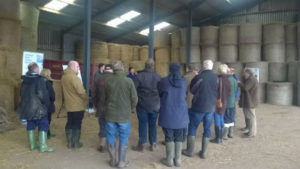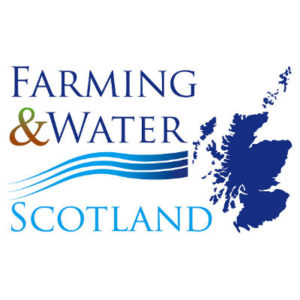Managing Water Margins & Priority Catchment Area Update – event summary
27 February 2017The event focused on outlining the implications of the new priority catchment areas in Dumfriesshire and considered options for the effective management of water margins.
After the opening of the meeting, Bruce McCleary (SEPA) delivered a presentation which outlined where the priority catchment areas are, when the different areas are being inspected , and which issues are arising most often.
Bruce's take home messages are:
- ALL findings will be discussed with you before the inspector leaves the farm
- This includes advising which mitigation measures may be suitable for the site and agreeing workable timescales
- Contact co-ordinator or NFUS if any concerns
- >500 visits carried out in Galloway/Stewartry - no major reported concerns
- Don't panic if you receive notification of an inspection!
 After the session from SEPA, delegates split into two groups. Each group visited two speaker stations before lunch and then two speaker stations after lunch.
After the session from SEPA, delegates split into two groups. Each group visited two speaker stations before lunch and then two speaker stations after lunch.
The speaker stations included:
- Options for management of water margins (incorporating GAEC, AECS, EFAs, biodiversity benefits, & grant assistance)
- Priority Catchment Area – Q&A station
- Alternative Watering Station provided by Farming & Water Scotland
- Animal Health station which considered the risks to animal health by drinking from natural watercourses.
SAC Consulting & SAC Veterinary take home messages are:
- SEPA visits are targeted towards farms within designated catchment areas.
- Don’t stress; SEPA are there to provide guidance and want to work with you rather than against you.
- Main issues SEPA find are poaching of water courses which they will ask you to address.
- Slurry storage is another aspect of the inspection and adequate slurry storage is required.
- Grants are available to farmers in priority catchment areas to fund up to six month slurry storage, but not available to farmers in a NVZ.
- Funding is available through AECS and new entrant capital grants to assist in the management of water margins and purchase of alternative watering practices.
- Consider what livestock are grazing upstream thinking particularly about the possible infection risk from Salmonella, Leptospirosis and Johne's disease.
- Provide mains water where practical and possible.
- Avoid poaching to reduce the risk of creating habitats for the mud snail that carries liver fluke.
Have a look at the photos from the event here
Further information can be found on the Farming & Water Scotland website. Downloads relating to the event include:
SEPA – Diffuse Pollution Priority Catchment Work
The Water Environment (Controlled Activities) (Scotland) Regulations 2011 (as amended)
SGRPID's Guidance for Water margins in fields
- GAEC 1 – Buffer strips along water courses
- The aim of GAEC 1 rules is to protect water against pollution and run-off.
- Topics: Rural Business
- GAEC 2 – Abstraction of water for irrigation
- The aim of GAEC 2 rules is to protect water resources by licensing abstraction of water for irrigation.
- Topics: Rural Business
- GAEC 3 – Protection of groundwater against pollution
- The aim of GAEC 3 rules is to protect groundwater against pollution.
- Topics: Rural Business
- GAEC 4 – Minimum soil cover
- The aim of GAEC 4 rules is to protect soil against erosion after harvest until the end of winter (winter is up to and including the last day of February).
- Topics: Rural Business
- GAEC 5 – Minimum land management reflecting site specific conditions to limit erosion
- The aim of GAEC 5 rules is to protect soil against erosion in certain situations.
- Topics: Rural Business
- GAEC 6 – Maintenance of soil organic matter
- The aim of GAEC 6 rules is to maintain soil organic matter levels.
- Topics: Rural Business
- GAEC 7 – Retention of landscape features
- The aim of GAEC 7 rules is to protect landscape features.
- Topics: Rural Business
- Technical Note (TN665): Alternative Watering for Field Grazed Livestock I – Abstraction Systems
- This technical note presents two different abstraction point designs to supply an alternative watering system, based on findings from Scottish Government funded trial work on three farms in Scotland.
- Topics: Water Management and Livestock
- Technical Note (TN666): Alternative Watering for Field Grazed Livestock II – Pumping Systems
- This technical note looks at the use of three alternative watering systems, based on findings from Scottish Government funded trial work on three farms in Scotland.
- Topics: Water Management and Livestock
Sign up to the FAS newsletter
Receive updates on news, events and publications from Scotland’s Farm Advisory Service

